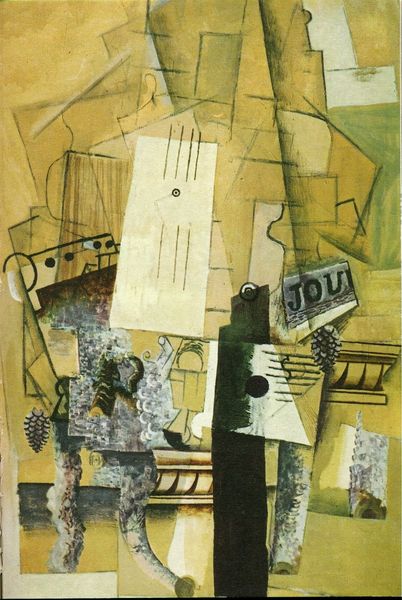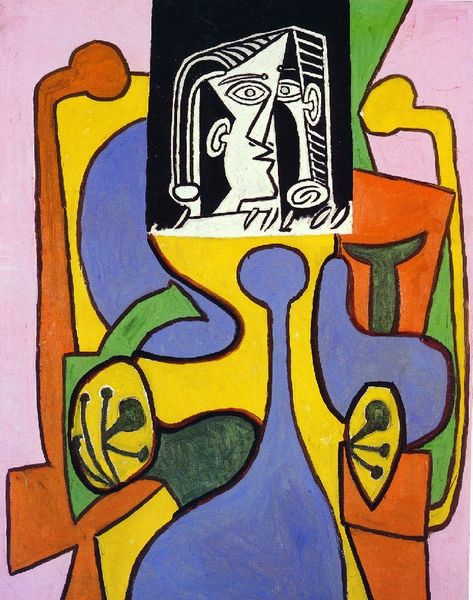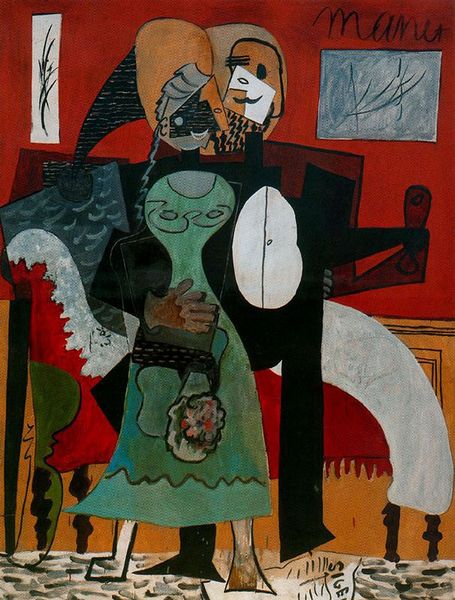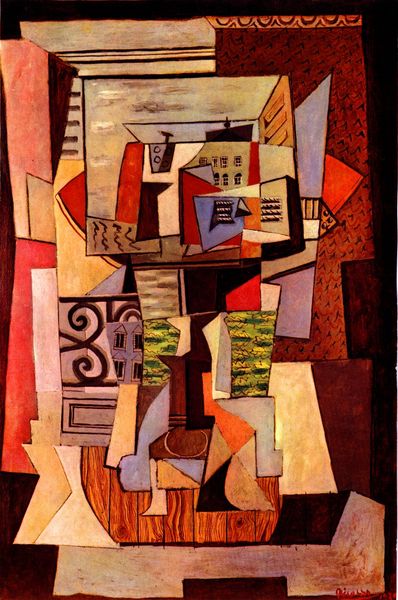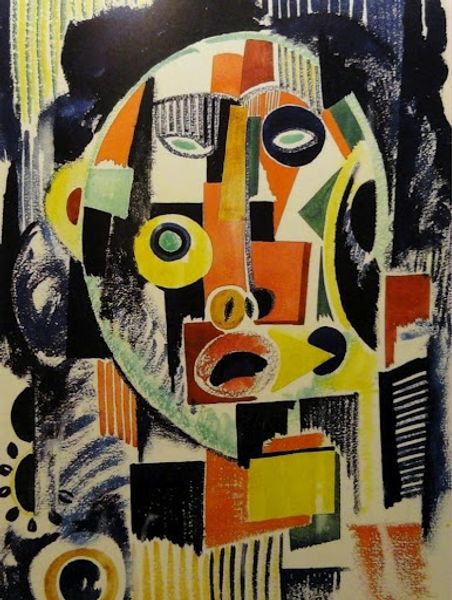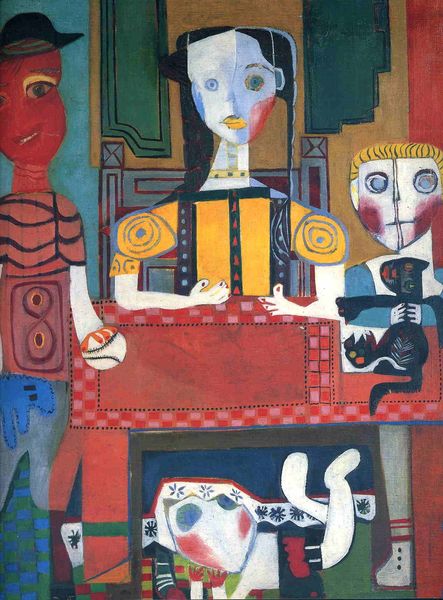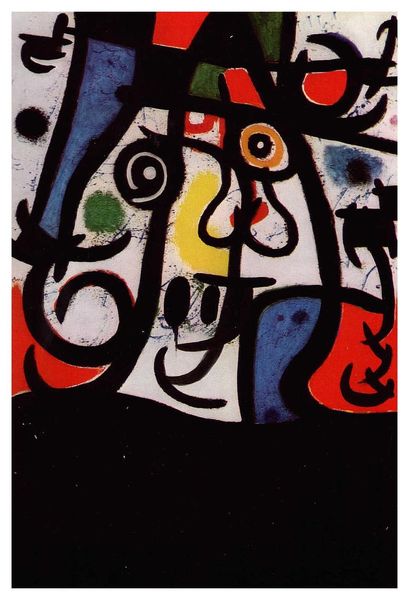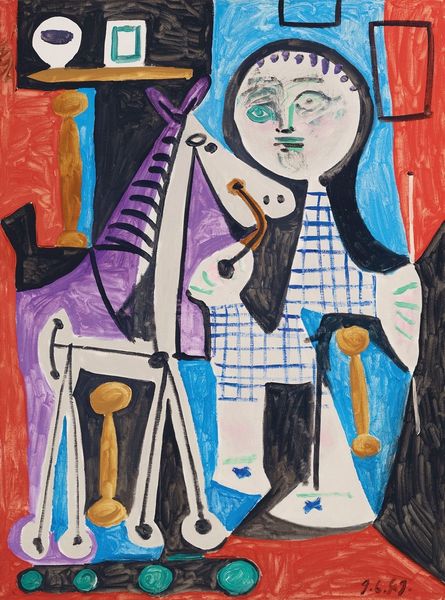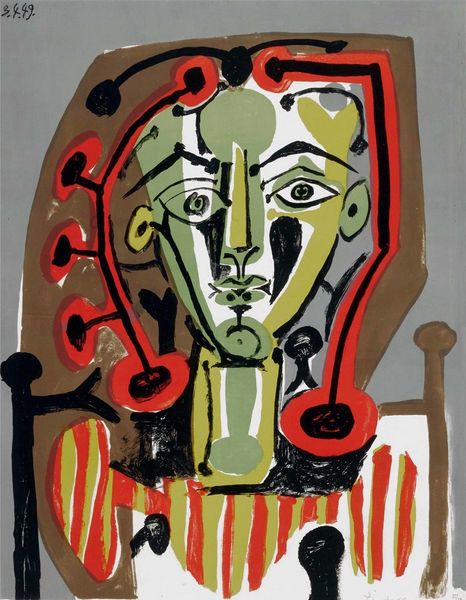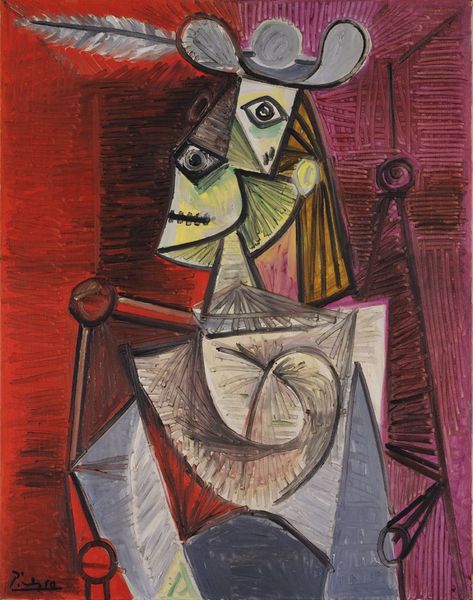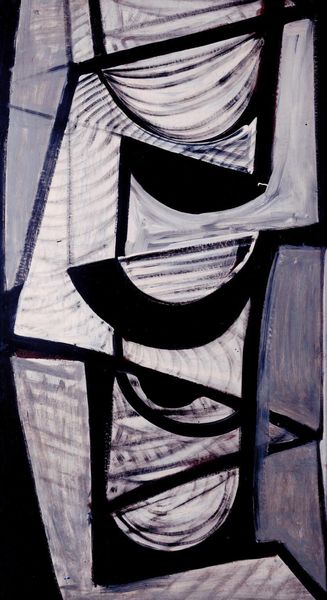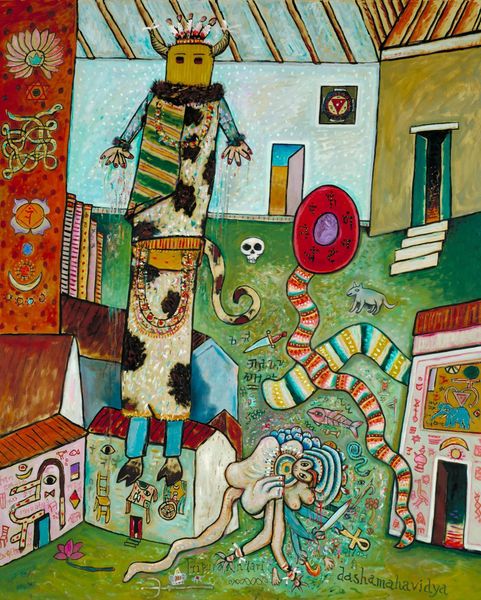
painting, oil-paint
#
cubism
#
animal
#
painting
#
graffiti art
#
oil-paint
#
dog
#
furniture
#
abstraction
Copyright: Pablo Picasso,Fair Use
Editor: So, here we have Picasso’s "Buffet Henry II and armchair with dog" from 1959. It's an oil painting and the subject matter seems domestic, but the cubist style really distorts the forms. It almost feels like a child's drawing in some ways, very simplified. What are your initial thoughts on this piece? Curator: Well, considering the materials, the ready availability of oil paint post-war allowed for a proliferation of these domestic scenes, ostensibly “high art,” yet recall the Henry II style buffet furniture which was mass produced for the aspirational classes...Do you see how the rough application of paint flattens everything? Editor: Yes, the lack of depth definitely jumps out! Curator: Exactly! There’s a leveling here. High and low, handmade versus manufactured, even the illusionistic depth of painting itself versus the tangible flatness of the canvas. He is also making us conscious of *painting* – oil paint as a substance, a material manipulated. The ‘dog’, a domestic pet that we might assume had some amount of material comforts provided by the owner also stands upright, like an object or decoration of sorts in relation to the Buffet, a piece of expensive furniture emulating 16th-century forms for the bourgeoisie. How do you think that relates to the wider cultural landscape? Editor: I hadn't thought of it that way, as a comment on social status. So the material aspect…it’s not just about *what* he paints, but *how* he paints it. Curator: Precisely. It brings up questions of labour and consumption. It encourages a reading not only *of* the artwork, but *through* its production. It gives us new lens to view objects. Editor: I’ll never look at a Picasso the same way again. This was really enlightening. Curator: And I found your fresh perspective invaluable as well!
Comments
No comments
Be the first to comment and join the conversation on the ultimate creative platform.

